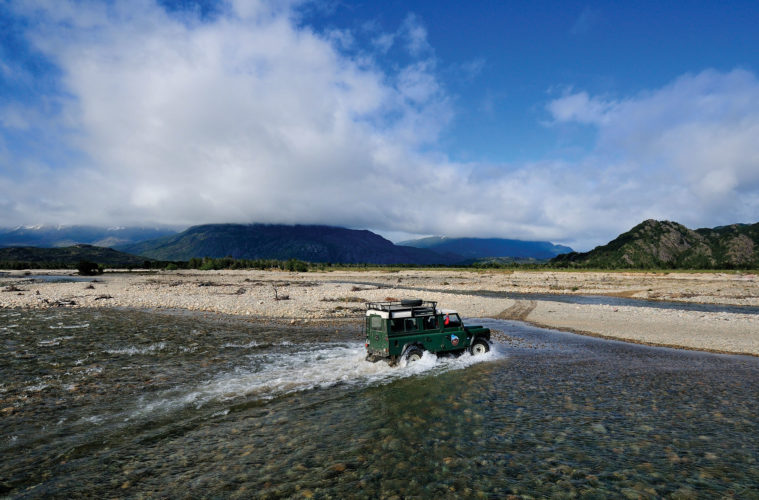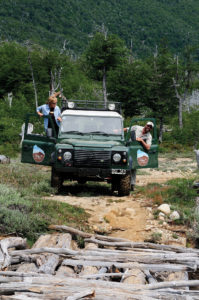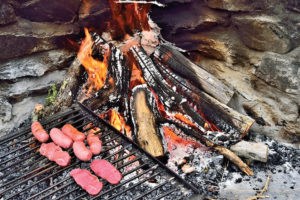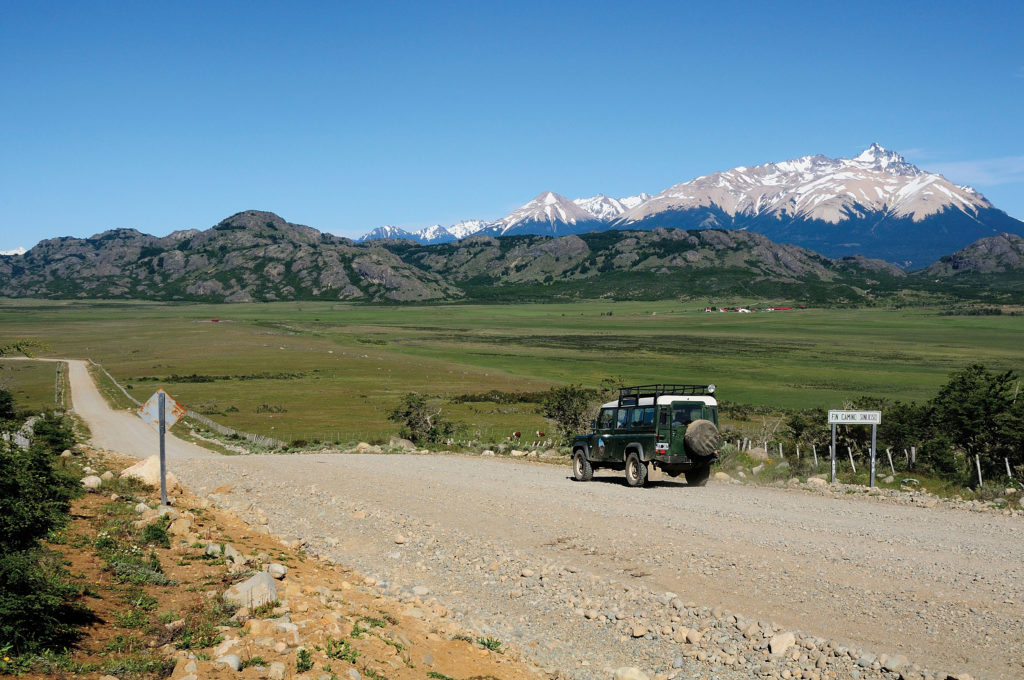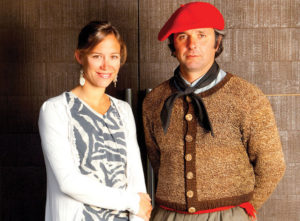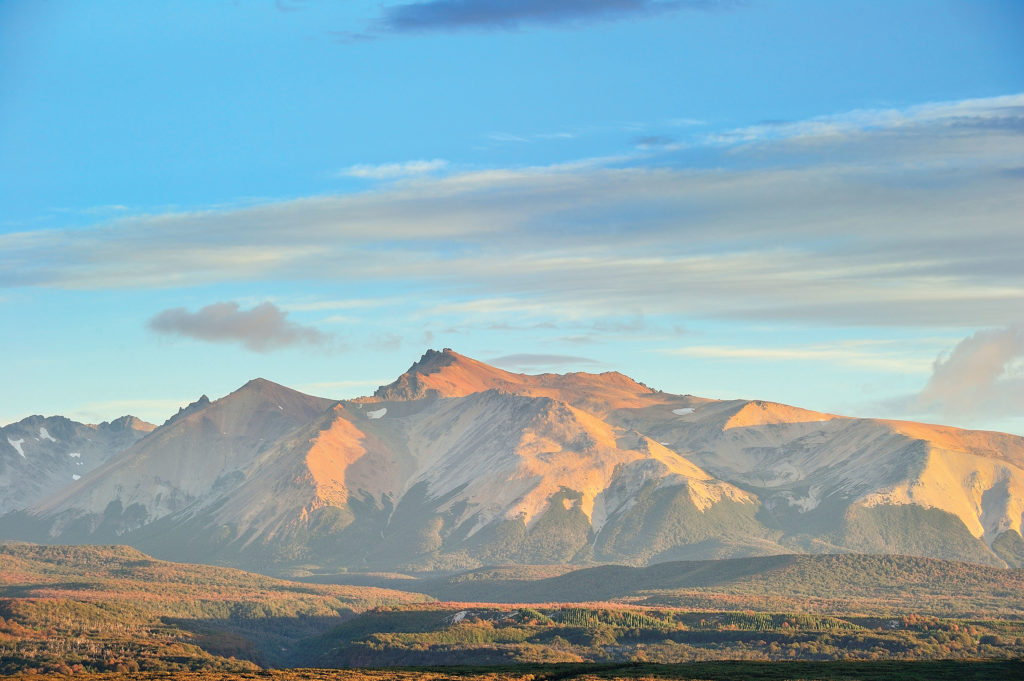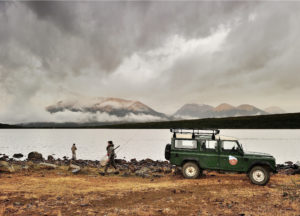I once penned a blog titled Loyal to the Brand. I wrote that I would shoot any camera as long as it was a Nikon, fly any airline as long as it was Delta, fish with any fly rod as long as it was a Sage — and own any vehicle as long as it was a Land Rover.
Rovers have been part of my life for as long as I can remember. At age 14, riding with my parents on our way to Sunday dinner at a local restaurant, we passed by a small antique shop. In the parking lot I spied a totally tricked-out Series Land Rover. It had the spare tire on the hood, a safari roof rack with extra gas cans — in short, it reeked of adventure. I begged my father to turn around so I could see the truck. I know my mother didn’t approve, but Dad turned around and I found myself standing next to the most beautiful thing I had ever seen. I promised that one day I would own such a truck and by my eighteenth birthday, I was the proud owner of the first of what would be many Land Rovers in my future. Presently, my Land Rover love is my ’96 Discovery I 5-speed; my wife Cathy adores her ’06 LR3.
Our Land Rovers support our love of fly-fishing. Cathy and I have traveled extensively to New Zealand, nations in Africa, Asia and Europe, and throughout the USA in pursuit of the best fly-fishing experiences. We share them through our classes, guided fly-fishing treks and books.
Many years ago, Hank Ingram, our South America coordinator at Frontiers International, said he had an assignment for us in Argentina. The nation is an angler’s paradise and the snow-capped Andes beckon one onward. It’s here in the land of condors that adventure is just around every corner. It’s here, under a star-studded sky, that Argentina asados take place (featuring the world’s best cuts of beef and lamb), where Malbec flows and seasoned fishing guides tell tales of monster trout late into the night — further amplified by the adventures of local legends Butch Cassidy, Etta Pace, and the Sundance Kid and the Wild Bunch.
This adventure involved a flight from Buenos Aires, 900 miles south to Esquel. Flights from Buenos Aires to Esquel are seldom a smooth ride; you just don’t get smooth when you’re flying around the Andes where thermals tease planes and passengers applaud when wheels finally touch down. We collected our luggage and walked out into the sun-filled parking lot. Looking around, I spotted a tall, weathered fishing guide standing next to an ’05 Defender 110. I said to Cathy, “We can’t be that lucky, can we?” But in his hand was a sign that read, “Welcome Barry and Cathy.”
We introduced ourselves and in turn meet Emiliano Luro, a passionate photographer and fishing guide who would show us around for the next few days. I asked about the Defender. The estancia’s owners, Bruno Duval and Pascal Caussil, bought it as a ranch vehicle. Pascal had a long history with Land Rovers in France and decided that it would be the perfect vehicle for exploring the fishing opportunities around the Los Pampas area. During our stay I asked about servicing the Defender; Emiliano laughed and explained they do what they can at the ranch, but that they all love it so much that when more advanced work is required, they drive it back to Buenos Aires, 26 hours away!
Hank’s surprise for us was that the defender would be ours during our visit. We load our gear and head south toward Rio Pico and the estancia. Along the way there is much talk about — the area, Emiliano, the estancia, and fishing. Not too many miles from the airport, the road turns to gravel. There is the occasional car or truck, but for the most part, it’s just us and a lot of wide-open spaces. This is the pampas that I recall having read about, with the Andes looming on the horizon. I try to be patient, but as the miles pass and we draw closer to the Andes, my excitement builds.
After four hours, we drive through Rio Pico, a village of about 1,000 residents in the province of Chubut, and continue toward the mountains on a secondary gravel road. If we stay on this road it will take us to Chile. It’s a hilly road and we’re driving through a lot of trees when it suddenly breaks open into an expansive, wide-open green valley of grass and cattle. We come to a sign, Estancia Tres Valles, and our eyes follow the road back to an impressive grouping of white ranch buildings with red tile roofs. It’s a beautiful picture against the green pastures and snow-capped mountains. We notice a small spring creek meandering through the ranch property and a couple of gauchos working cattle in one of the corrals. It’s like time has stood still here and transported us back to another era.
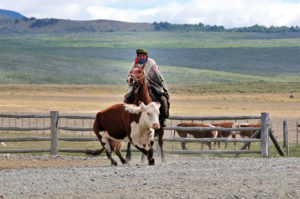
We stop at the corral and meet the ranch manager, Simon Corti Maderna. Simon is a striking man, traditionally dressed in bombachas, knee high leather boots, beret and red neckerchief. We immediately want to grab the cameras and start shooting, but we refrain — after all, we just met the man. He’s busy, so we say goodbye and drive on to the lodge. We will see Simon again at dinner. The lodge is impressive, fairly-new and tucked in a sloping hillside leading down to a pristine lake, Lago Tres Valles. With the snow-capped Andes reflecting off the surface, we think we found paradise. Simon’s wife and lodge manager, Guillermina Etcherbarne, greets us and shows us to our room. The spacious, comfortable lodge offers four private guest rooms, all with a view of the lake. Wow, it just keeps getting better.
Over lunch, Emiliano lays out a plan, starting with the lakes — of which there are many and all have trout. Lago Vintter is famous for the big brook trout that run in the fall, and to get to Lago Isla one must open and close 13 gates — but it’s worth the trouble. Others have simply been given a number, Lago #1 through Lago #7. And these are just a sampling of the lakes close by. Along with the lakes, Emiliano says we have access to many spring creeks, rivers, streams and lagoons. Some can be reached only by 4-wheel drive, hence the Defender. We unpack and get settled in for tomorrow the adventure begins.
Now, almost 20 years later, the adventure continues, for twice a year we return to Tres Valles to fish and explore the incredible fishing opportunities that exist there. This past December, Cathy landed a 14-pound rainbow trout, which after carefully releasing, we celebrated with a Malbec toast with Emiliano. Cathy turned around and after lunch landed a 16 ½ pound monster. These are lifetime fish. The Defender is still going and continues to take us to some of the best trout fishing in the world.
During the 30-plus years Cathy and I have worked as staff photographers and trip hosts for Frontiers International, one of the largest sporting travel agencies in the world, we’ve been fortunate to photograph safaris in Africa, Mongolia’s Gobi Desert and the Eagle Hunters festival in Bayan-Ölgii. Our groups have fished for Atlantic salmon on Russia’s Ponoy River and cast a line in the beautiful rivers in Slovenia for marble trout — the list goes on. We are often asked for our favorite destination. Most anglers expect to hear us say New Zealand, for the large brown trout that live there. The photographers always expect us to say Africa. We love it all, but nothing beats exploring the rivers and lakes in Argentina’s Lake region.
[For more information, visitwww.barryandcathybeck.com and www.frontierstravel.com.]
